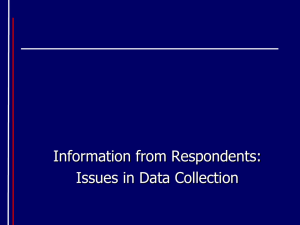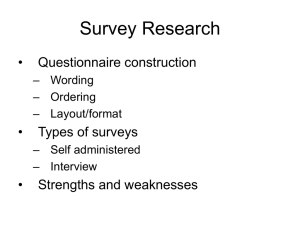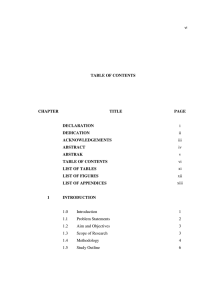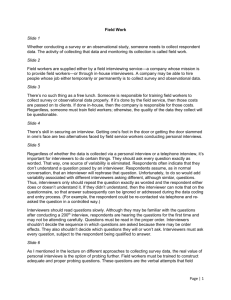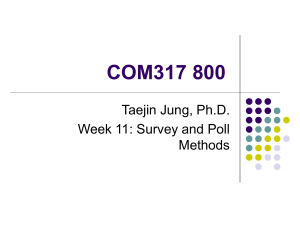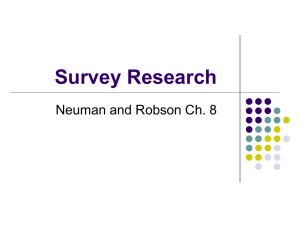Client Survey Data Collection Training Presentation Template
advertisement
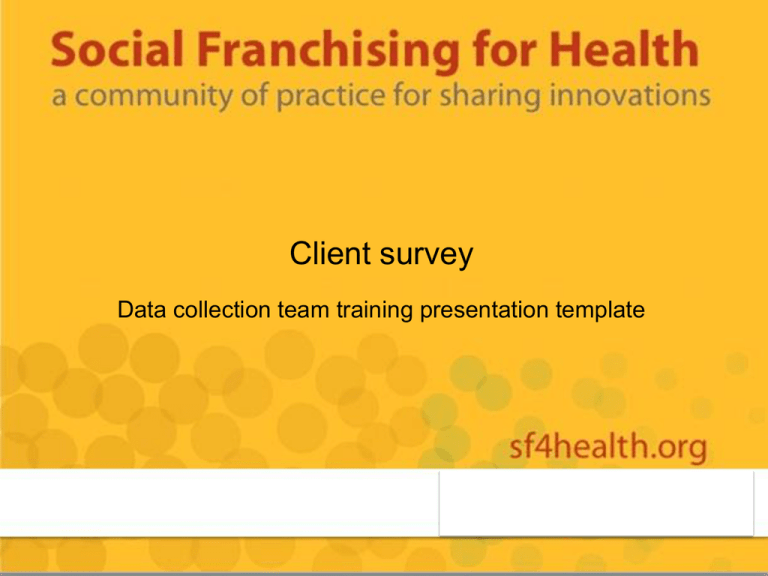
Client survey Data collection team training presentation template Session 1: Background information How to use this template • Modify each slide as needed – blue text is instructions for you as you modify • Keep these points in mind: • The 7x7 rule: don’t have more than 7 lines of text, and each line has at most 7 words • Keep participants engaged with group work and interactive sessions • The trainer, not the slides, is the star of the show • Be sure that the trainer has thoroughly reviewed the entire toolkit and is someone with survey experience • Spice up the slides with images if you like About this organisation • Insert 3-6 bullet points about what your organisation does About this project • Insert 3-6 bullet points about the project whose clients you are surveying • (For example, about your social franchise) Why do we need this survey? • Explain the purpose of the survey • Explain how the survey will benefit your programme and its beneficiaries • Understand who our clients are • Ensure that we reach those in need Franchisees • Show a photo of one or two of your franchisees • Explain what they are • If appropriate, explain that they are independent, and are cooperating with the survey out of goodwill Session 2: Respondent selection How to select respondents • Visit the facilities on your timetable • Interview every nth client – modify this according to your sampling tool results • Interview clients til you reach the required number The importance of the selection procedure • The sample has been carefully designed • You must adhere exactly to the sampling instructions • Mistakes that can ruin the survey: • Selecting respondents that are convenient • Selecting respondents to finish quickly The importance of the selection procedure Ask the group why it is so crucial to stick to the sampling procedure What might be different about a convenient client? What might be different when you select the easy clients – the ones who are there now, the ones who appear friendly, etc Session 3: How to conduct a good interview Informed consent Clients have the right to: • to know what the survey is about and what it is for • refuse to be interviewed • refuse to answer any question • end the interview whenever they like • Rember interviewees are generously giving time and information Informed consent Go through the informed consent sheet with the group. Ask them: • Does it cover everything the client needs to know? • Why is this more than a formality? Leading questions • A leading question encourages a particular answer Examples: • “You use contraception, right?” • “Don’t you use contraception?” • “Do you use contraception, like condoms” Leading questions Ask the group for more examples of leading questions • Ask them why it’s important to avoid leading questions How to avoid leading • Stick to the text in the questionnaire If the respondent doesn’t understand: • Try repeating the question • Keep probing and further explanation neutral Keep the interviewee comfortable • Remain respectful and neutral • Don’t judge the respondent Is this good or bad: • Interviewer: “Do you currently use any form of contraception?” • Respondent: “No” • Interviewer: “Really? Oh okay…” Role play • This is a good opportunity to ask the interviewers to practise with one another in a role play • You may like to have two act out an interview, and have the group observe and comment on what they do Session 4: Filling in the questionnaire Questionnaire code • This will depend on the coding system you have decided on Your writing • Stick to capital letters (modify as required for the language) • It is worth taking longer to write clearer • When you make an error: • Cross it out with two lines • Write the correct answer Avoid inferring answers • Only write down what the respondent says • Do not assume what the respondent ‘meant’ Session 5: The questionnaire Questionnaire • During this session, the group will go through the questionnaire question by question • Read each one out loud and discuss as a group: • How could the question be confusing? • How would you probe or explain further? Session 6: Quiz Quiz questions • Which is better, A or B? Interviewer: Quiz questions • What is wrong with this: Interviewer: Quiz questions • It is your fifth interview on the third day of data collection. What questionnaire code should you put down? □□□□□□ Session 7: Practice in the field Practice in the field 1. Ask one of the franchisees (if possible one not in the sample), to use their clinic for the training. 2. Bring the data collection team and supervisors to the facility – it may be easiest to separate them into groups 3. Have the interviewers select respondents and interview them, while being observed by supervisors and the trainer 4. Ensure that all potential respondents understand that the interview is to help train the interviewers, and go through informed consent as normal
